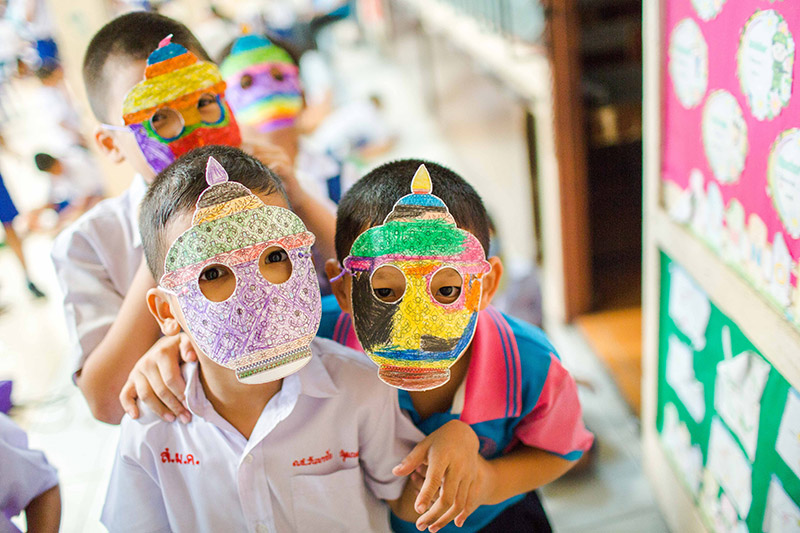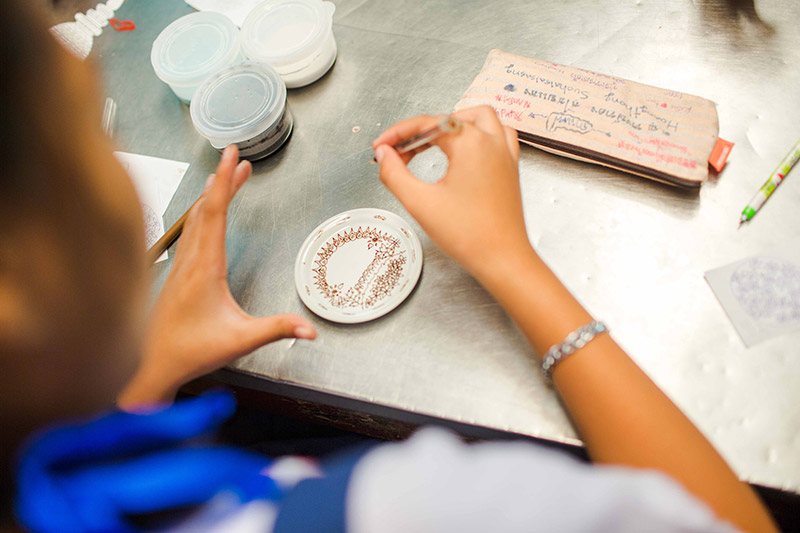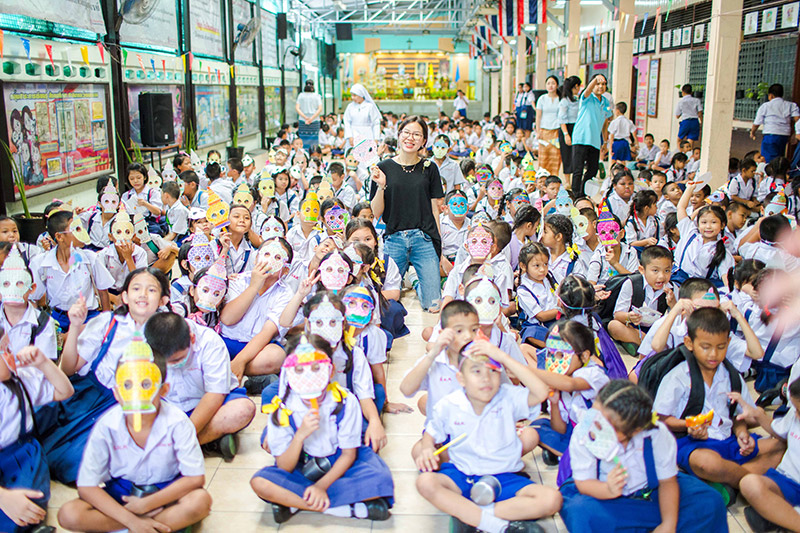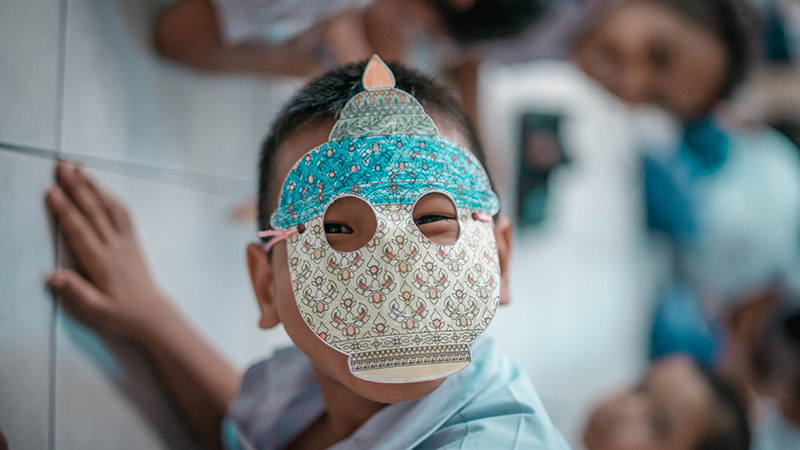By Puncharat Chaichanawanich
Born to a Thai-Chinese family that owns an antique shop, I was exposed to Chinese and Thai art starting at a very young age. One day, I accidentally dropped a soup bowl and, to the utter shock of my entire family, that little accident came with a THB200,000 (US$6,600) price tag.
I realized the bowl, as well as our other kitchenware, tea sets and garden stools, were not ordinary porcelain, but forms of Bencharong and Lai Nam Thong ceramics.
Known for unique forms, prominent motifs and bright hues, Bencharong enameled porcelain has become a “must-have” souvenir from Thailand. More than that, however, the craft is an example of intangible cultural heritage – practices, representations, expressions, knowledge and skills that local communities recognize as part of their identity and sense of belonging.
Bencharong and Lai Nam Thong, its sister art form, are the two mainstays of Sino-Thai ceramics, which historically were made in China for the Siamese court. It dates back to the late Ming period in China, corresponding to the early 18th century during the Ayutthaya period. But it was during the Qing dynasty – which coincided with Bangkok’s Rattanakosin period – that Bencharong was most prized by those with wealth and became the most sought-after porcelain through the 19th century.

The word Bencharong originates from the Sanskrit word panch, which means five, and rong/ranga meaning color, suggesting the use of the five base colors of black, yellow, green, red and white. However, Bencharong today often features more variety as the original colors are mixed into different shades of brown, purple, orange and pink, with more than 30 colors now used.
Bencharong’s patterns and motifs are symbolic, reflecting a cultural fusion of India and China in Thai art. Western influences are also apparent in some wares as well as decorations inspired by nature, such as flowers and birds, and Buddhist motifs and Hindu mythological creatures, such as the Garuda and Naga.
My own epiphany about their cultural significance came with the realization I’d lived my whole life surrounded by these notable Thai art forms. I believe that others who haven’t been exposed to this aspect of our culture might also lack awareness about the cultural and artistic value of Bencharong, which could see it disappear.
Motivated by that realization, I recently completed a pilot program called “Bencharong Spanning the Generations” at the Samakee Songkrau School in Bangkok’s Khlong Toei district, where I taught students Bencharong production and function. Leading more than 500 young students over several weeks, I guided the students in interactive discussions on the wonders and value of Bencharong.
The program culminated in each student creating his or her own Benjarong replica. Younger students worked on Bencharong masks, which allowed them to expand their understanding of patterns and colors, while older students drew and painted their Bencharong own plates.

Handed Down
While researching the course, I was inspired by the artists and scholars that I encountered. One of Thailand’s best-known artists in the field, Sarranya Saisiri began learning to mold and paint Bencharong from her mother, father, uncle and grandfather at the family business in Samut Songkhram. In 2014, she was recognized by the Support Arts and Crafts International Centre of Thailand.
“Not only does it demonstrate the intelligence of our ancestors, it also serves the purpose of an educational and aesthetic resource,” she said, adding that it was important for contemporary artists to emulate traditional patterns.
It’s difficult to connect teenagers to art history, said professor Podjanok Kanjanajuntorn of Thammasat University’s Faculty of Sociology and Anthropology. The conventional way of teaching art history, Podjanok said, gives students the impression they are learning something “ancient,” “boring” and “uninspiring.”
As for its use, she said it’s seen more as a high-end, expensive decorative art than functional item.
“We have the resources: museums, research centers and cultural heritage sites. It’s just that we don’t make best use of them,” she said. “For example, people don’t see the value of Bencharong crockery because the people who can buy it don’t really use it, and the people who could really use it cannot afford it.”
To keep costs down for the program at Samakee Songkrau School, my community and souvenir store Boonyarat Benjarong helped bring painting techniques, gold-filled hypodermic syringes, small-bristle paint brushes and traditional motifs to teach the techniques and relevance of preserving culture and heritage.
Not every school in Bangkok, much less Thailand as a whole, can afford to take students to art exhibitions and museums, so why not bring small-scale exhibitions to them? Art education allows people to understand the interconnectivity of cultures as well as the wider world. And we know that young minds are the most influential agents of change. If adults say that they depend on the new generation to lead and innovate, then we should start by equipping ourselves with the knowledge to understand and appreciate the world around us first, so that we know what to change and what to keep.
“By actively engaging in hands-on experiences, one can sense the value of the past as a path towards understanding the present and the future,” said Southeast Asia historian Dawn F. Rooney, author of Bencharaong: Chinese Porcelain for Siam.
Without youth interest, traditions struggle to endure.
“One of the main challenges in safeguarding intangible heritage by communities is the loss of interest and enthusiasm to practice by the young generation,” said Montakarn Suvanatap of UNESCO Bangkok. “A ‘classic excuse’ for generation gaps has become a threat to both the valuable traditions and the beautiful community life.”
UNESCO supports local initiatives to safeguard intangible cultural heritage, based on the belief that local communities, where traditional bearers and practitioners live, are the true stewards of their own heritage.
Since it launched in 2003, the UNESCO Convention for the Safeguarding of the Intangible Cultural Heritage has been the key international agreement calling for full involvement and consent of communities against top-down decisions from national governments on how living heritage should be protected and propagated.

Puncharat Chaichanawanich is a junior at KIS International School. In addition to Bencharong antiquities, her interests include Thai-Chinese traditions, interpretive dance and film-making.
Find all episodes of The Coconuts Podcast




